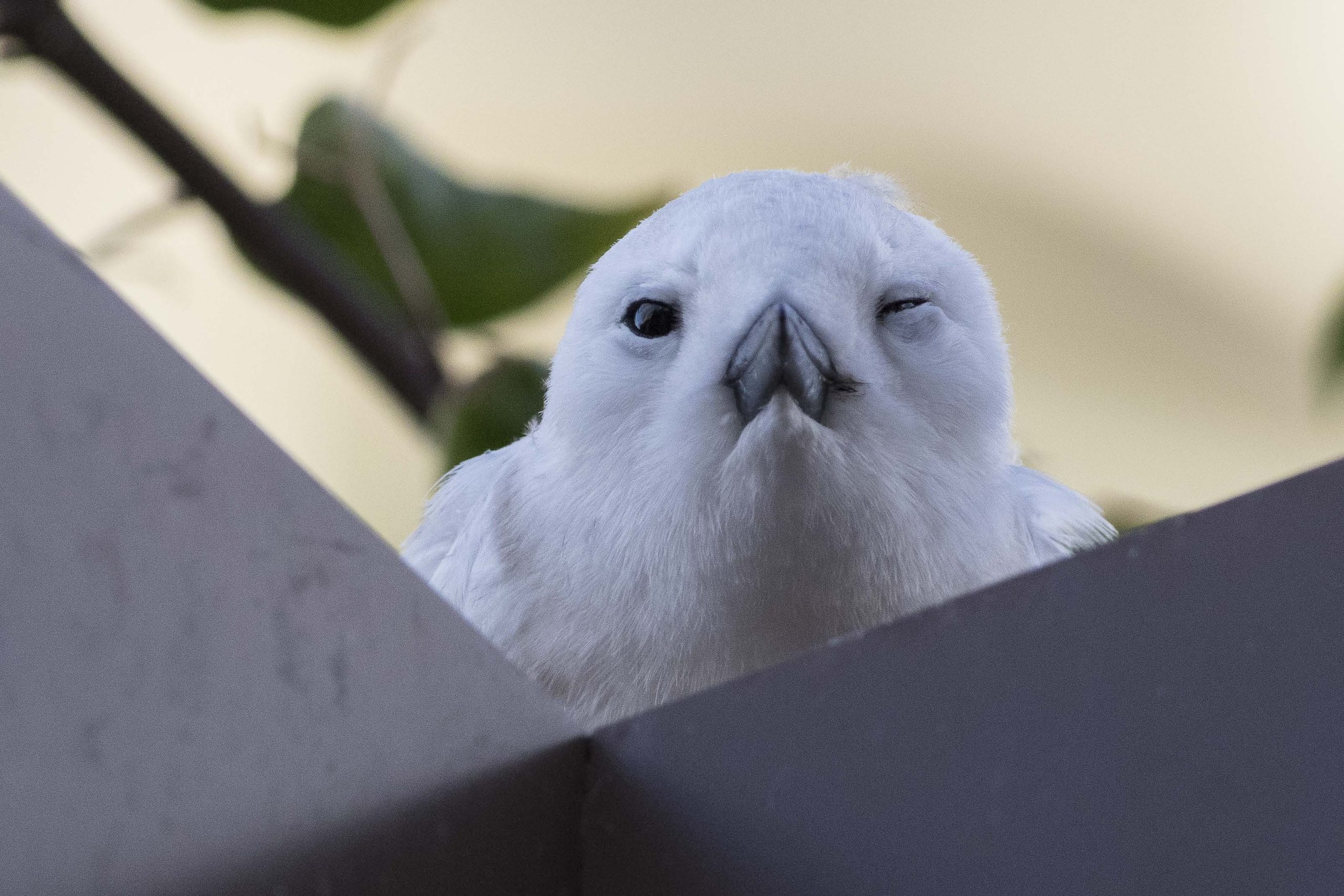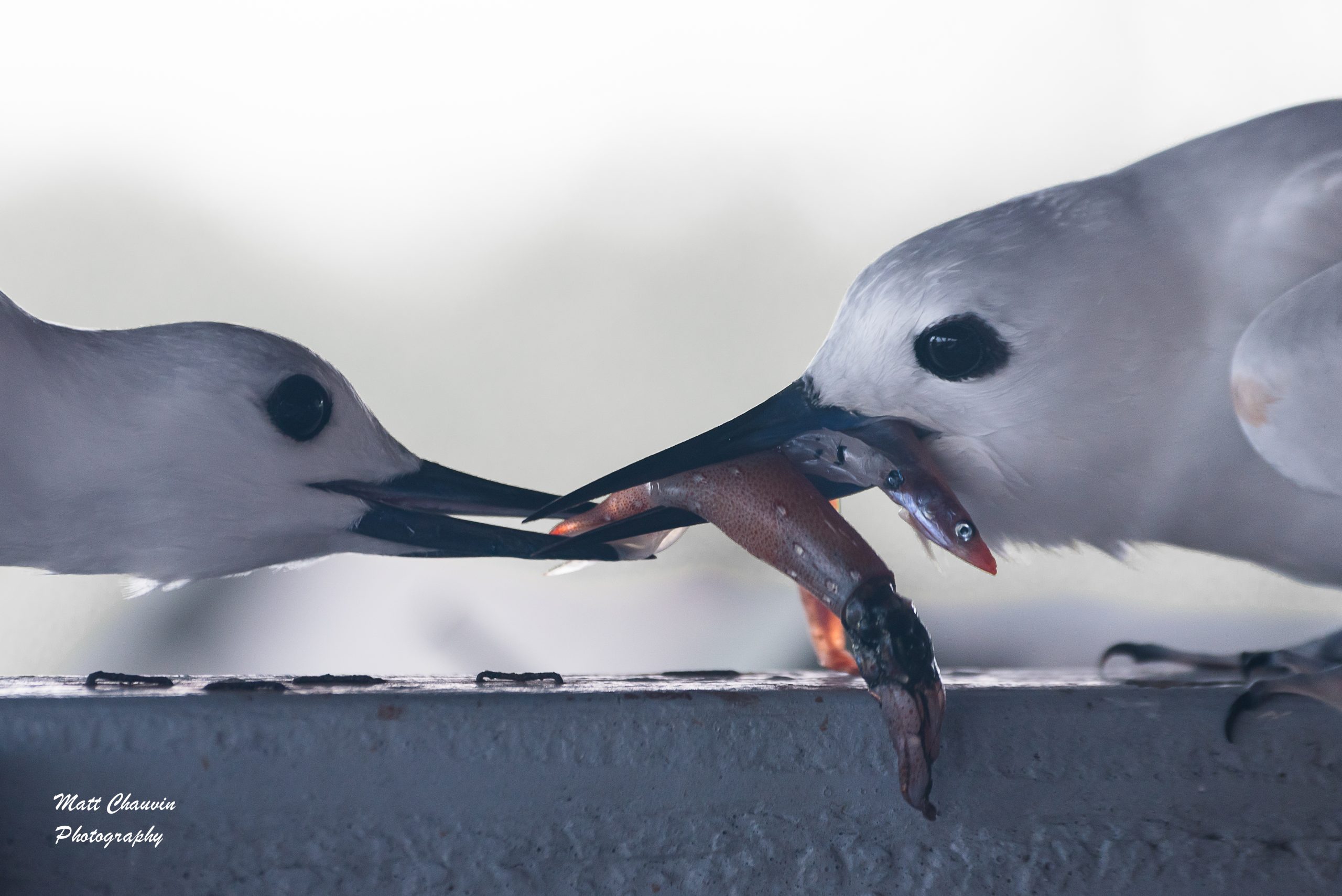Manu-o-Kū

Names
- ʻŌlelo Hawaiʻi: Manu-o-Kū
- Common: White (Fairy) Tern
- Scientific: Gygis alba
Song
Conservation Status
- State listed as Threatened
- State recognized as Indigenous
- NatureServe Heritage Rank G4 – Apparently secure
- North American Waterbird Conservation Plan – Moderate concern
- Regional Seabird Conservation Plan – USFWS 2005
Species Information
The manu-o-Kū or white tern is a small, entirely white tern (Family: Laridae) with a pantropical distribution. Individuals have dark eyes and a thick, sharply pointed black bill with an electric blue base. Adult males and females are identical and there are no seasonal changes in plumage. Flight is buoyant and characterized by erratic changes in direction and speed. Manu-o-Kū (white tern) feed by dipping the surface or surface diving. Often joins hunting parties made of several species and usually preys on fish driven to the surface by large, predatory fish. In Hawai‘i, the diet of white terns consists mostly of juvenile goatfish and flying fish. Breeding adults remain close to nest sites and forage in inshore areas such as shoals and banks with occasional forays into offshore waters. Not as colonial or social as most other terns, preferring to nest in loosely associated groups or singly. Manu-o-Kū (white tern) remain paired for several seasons and often return to the same nest site year after year. No nest is constructed; a single egg is laid wherever a suitable depression is found. Most nests are on tree branches, buildings, or other man-made structures, rock ledges, or on the ground. In Hawai‘i, manu-o-Kū or (white tern) breeds year-round, but most eggs are laid between February and June. Pairs will replace an egg after initial nest failure, and some successfully raise two or three sets of offspring per year. Both parents incubate egg and brood and feed the chick. Newly-flying birds are dependent on adults for up to two months. Birds first breed at five years of age, and the oldest known individual was 42 years old.
Distribution
Manu-o-Kū (white tern) breed throughout the NWHI and on the island of O‘ahu. Outside of Hawai‘i, manu-o-Kū (white tern) breeds on islands throughout subtropical and tropical oceans, although breeding in the southern Atlantic Ocean is limited. Non-breeding distribution is unknown. Manu-o-Kū (white tern) typically remain near their breeding colonies year-round, seldom venturing far from shore.
Habitat
Terrestrial: Manu-o-Kū (white tern) breed on oceanic islands, both on low-lying coralline sand islands and high volcanic islands. Nests are not built, eggs are laid on whatever suitable depression is found. Nest sites include volcanic pinnacles, cliffs, rocky slopes, large bushes or trees, and man-made structures. Marine: Nearshore waters.
Threats
- Introduced predators. Like all seabirds, adults and nests are susceptible to predation by rats (Rattus spp.), and feral cats (Felis silvestris). All sites in NWHI are free of rats and cats. However, given the remote nature of nesting sites (e.g., cliffs), manu-o-Kū (white terns) are less vulnerable to predation than many other seabirds. Historically, rats likely preyed on eggs, young and adults on Midway.
- Introduced insects. On Midway, big-headed ants (Pheidole megacephala) have been observed attacking pipped eggs and incubating adults. On Kure, introduced scale insects are killing native vegetation, but the effects on manu-o-Kū (white tern) are unknown.
- Overfishing. Because manu-o-Kū (white tern) rely on predatory fish to drive prey to the surface, overfishing may eventually affect Hawaiian populations.
Plans & Projects
Additional Resources
For more information and references visit the DLNR State Wildlife Action Plan factsheets. DOFAWʻs species pages and State Wildlife Action Plan fact sheets are provided for general information and are not meant to be a citable, original source of data. If you are a student, researcher, or writer looking for a citable source, please explore the references below or find other original data sources, rather than citing these webpages. The references below were provided by the authors of the State Wildlife Action Plan fact sheets at the time of drafting:
- NatureServe. 2003. Downloadable animal data sets. NatureServe Central Databases. Available at: https://www.natureserve.org/getData/vertinvertdata.jsp (March 10, 2005).
- Niethammer KR, Patrick-Castilaw LB. 1998. White tern (Gygis alba). In The Birds of North America, No. 371 (Poole A, Gill F, editors.). Philadelphia, (PA): The Academy of Natural Sciences; and Washington DC: The American Ornithologists’ Union.
- U.S. Fish and Wildlife Service. 2005. Regional seabird conservation plan, Pacific Region. U.S. Fish and Wildlife Service, Migratory Birds and Habitat Programs, Pacific Region. Portland, (OR): U.S. Fish and Wildlife Service.



